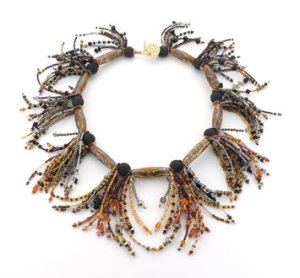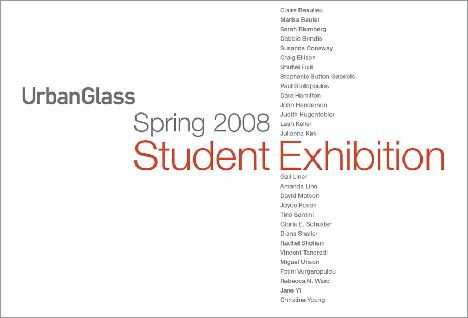 Donna has asked me to chime in with an occasional post about my favorite subject, handmade glass beads. These are technically called “lampwork” beads, sometime I’ll write about how that term came about, but for now we’ll stick with “handmade”!
Donna has asked me to chime in with an occasional post about my favorite subject, handmade glass beads. These are technically called “lampwork” beads, sometime I’ll write about how that term came about, but for now we’ll stick with “handmade”!
For my first post, I thought some NJBS might want to learn about the differences in the two major categories of glass types, borosilicate glass and so-called “soft” soda-lime glass. Borosilicate, also known as “hard” glass or “boro” is the glass we long ago knew as PYREX. That is the brand name the Corning manufacturer calls its borosilicate glass. If you have ever used a Pyrex measuring cup or baking dish you know that it is valued for its extreme resistance to temperature fluctuation. A cold measuring cup can be filled with BOILING water with rarely any problem. Raw meatloaf, in a cold dish, goes directly into that hot oven, again, no problem.
Boro’s ability to withstand big temperature shifts means that when it is worked at the torch it is good for big items, only a part of which is hot in the flame at any one time. Boro got its start in the artistic world when it was used to make pipes (for smoking tobacco or whatever). An artist could fashion one end of the pipe in the flame while the opposite end was almost room temperature. Similarly, when filled and lit, the pipe didn’t explode from the sudden application of heat when lit to be smoked, this was a good thing. Boro also makes great globe ornaments.
The early problem with boro was that it was only made in clear. In the past twenty years or so, that problem has been solved, and boro now comes in many deep, rich saturated colors, and is especially prized for its russets and purples. Unfortunately, colored boro is very pricey (see below) and that is why many artists use a teeny bit of color maginified by heavy layers of clear (which is cheaper). Examine the boro beads and marbles you come across, you will see lots of clear. If instead they have a lot of colors, that glass expense was most likely reflected in the price of the marble or bead.
Soft glass is the other major category of glass and is made by several different manufacturers. It is much more sensitive to heat fluctuation and must be kept warm the entire time it is worked in the flame. If it cools too far from the flame temp it will crack while the bead is being made, or later while it is being annealed in the kiln. The majority of beadmakers use soft glass, and you will also find it used for other things such as goblets, sculpture, and marbles.
Not all soft glasses can be used together, but even within a single brand there are plenty of colors. Unlike the muted tones of boro, soft glass can be bright yellows and reds. The soft pallete is typically lacking in great purples. Soft glass is what the Italian glass artists have used for a very long time, and the first soft glass used in this country was imported from Italy. Nowadays, it also comes from Germany, Japan, China, America and elsewhere.
Boro and soft glass cannot be used together. If they were to be combined in one item, that item would crack all over the place as it cooled. This has to do with the vastly different rates of expansion and contraction in the two glasses. Artists choose their favorite glass and then use a torch and a kiln, and other materials, that work with that type of glass.
Why is boro “hard” glass and soda-lime “soft” glass? It is probably because it takes far more heat (like a thousand degrees more) to melt boro than to melt soda-lime, and yes, when cool, it is harder – although all glass is breakable.
Why is soft glass a little more prevalent in beads? A pound of ordinary soft glass in widely available colors is about $10-15 whereas a pound of boro is about five times as much! The greatest expense in making beads is the cost of materials, and so the more expensive glass yields more expensive beads!
Finally, some of you who have seen my work might wonder what I use. The answer is, that with rare exception, I work in soft glass. I have not had the time to study the use of boro that would justify the added expense and I have yet to grow bored with the opportunities offered by soft glass. I always assure my students that all of their soft glass skills will transfer nicely to boro and it is a good idea to practice with the cheaper material.
Well known artists who work in boro include Nancy Tobey, Gail Crosman Moore, Andrew Brown and Lauri Copeland. Some prominent soft glass artists include Leah Fairbanks, Kathy Johnson, Jill Symons, Ann “Schermo” Baldwin and Andrea Guarino-Slemmons. This is just the tip of the iceberg, and in future posts I’ll try to post you to some of the wonderful work that can be seen on the web.
I hope this has all been interesting to some of you. Please let me know in your comments if you are curious about other aspects of the glass world and I’ll try to clue you in (when I know!).


